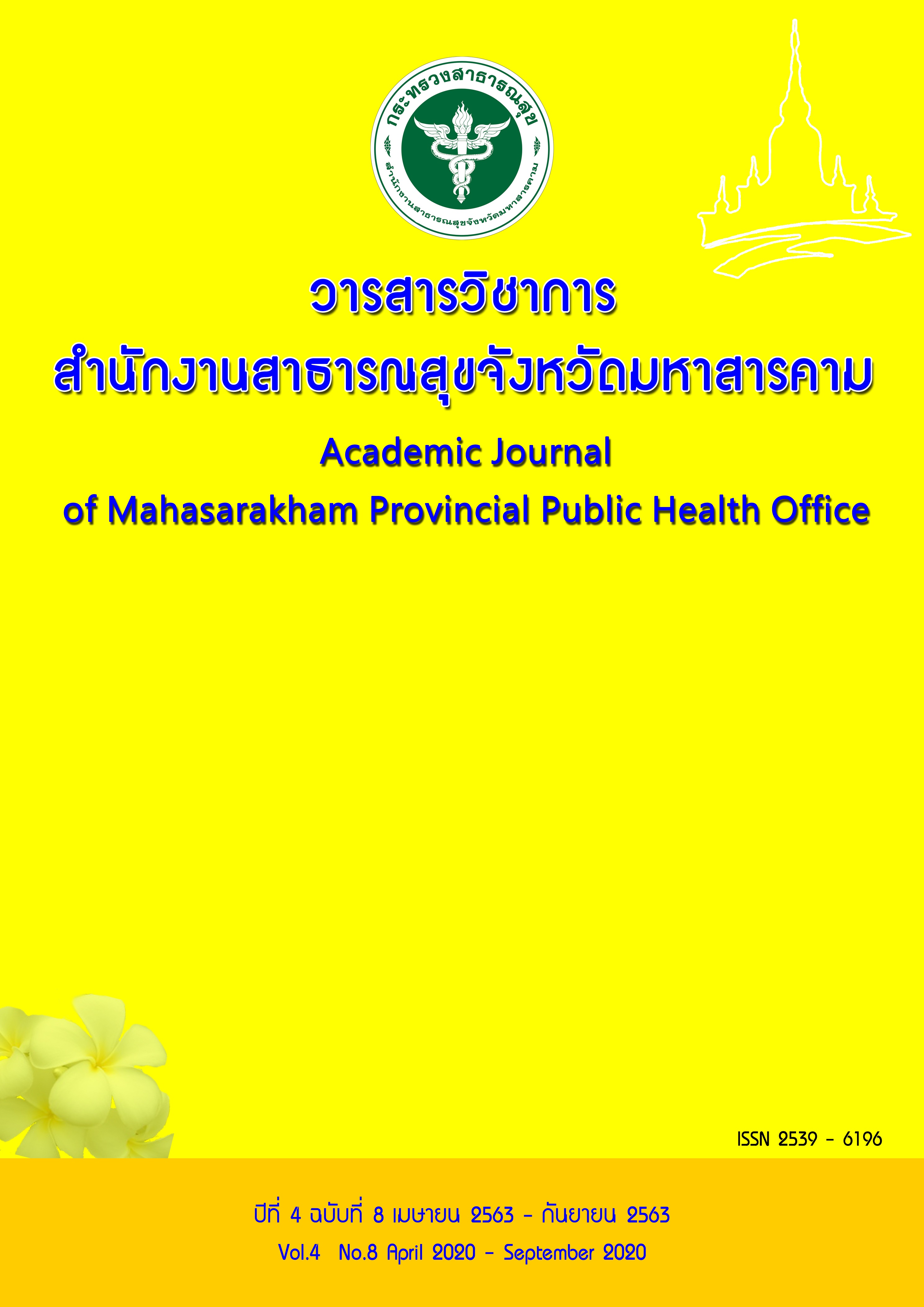Improvement of biological quality of water supply of Queen Sirikit Heart Center in the Northeast
Abstract
Abstract
The purpose of this research was to study the relationship between the Oxygen Reduction Potential (ORP) and amount of chlorine for improvement of biological quality of water supply of Queen Sirikit Heart Center in the Northeast (QSHC). Studies design in experimental of research and development by collecting water quality data in QHSC. Faculty of Medicine. Khon Kaen University during in 2019 (1st October 2018 – 30th September 2019). Data were analyzed using descriptive statistics and data analysis with statistics for frequency distribution, percentage, mean, standard deviation. The research findings quality of water for 329 points, separating into the end of the pipe at the source of 10 points, the risk point of 319 points found that the quality of water that passed the physical evaluation criteria was 322 points, equal to 97.87 percent. Passed the evaluation criteria of 7 points, equal to 2.13 percent. When evaluating the biological quality, it was found that the standards were not met, with the total plate counts (TPC) > 500 CFU / ml) 2 points, representing 0.61%, found Coliform and Fecal coliform exceeded the standard (> 1.1 MPN / 100 ml) in the amount of 7 and 3 points, equivalent to 2.13 and 0.91% respectively. When evaluating standards in both aspects, it was found that the quality of water supply that passed the criteria of 314 points, equivalent to 95.44 percent, did not pass the evaluation criteria of 15 points, equivalent to 4.56 percent. When studying the relationship between ORP, pH and chlorine content decreasing of microorganisms in water supply, it was found that the optimum ORP and pH for decreasing of coliforms are in the range 690-700 mV and 8.5-9 respectively. If adding 12 ppm of chlorine, the efficiency of coliforms in water is highest.
Keywords: Biological quality, Water supply, Oxidation Reduction Potential (ORP)


